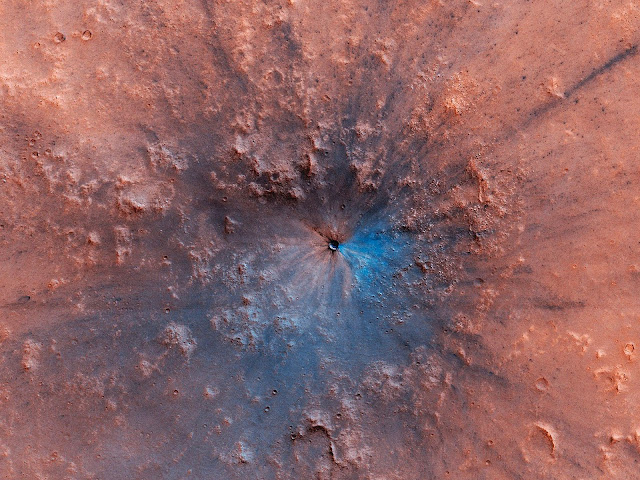Our solar system is a constantly changing, dynamic region of space.
A brilliant camera on NASA’s Mars Reconnaissance Orbiter — a spacecraft circling the red planet — detected an impact site on the Martian surface that was relatively recent. The spacecraft spotted a dark area on the ground and then captured a detailed image using its high-resolution camera (dubbed the High-Resolution Imaging Experiment).
HiPOD Follow-Up: By way of comparison here is a version of today’s HiPOD with the original contrast that shows less shadow in the small crater.
For full images including scale bars: https://t.co/oTypMcA0Pv pic.twitter.com/9k6Rdhz4hr
— HiRISE: Beautiful Mars (NASA) (@HiRISE) March 30, 2022
The impact, which is unprecedented in cosmic terms, most likely originated between February 2006 and March 2014, according to the University of Arizona’s imaging team. To provide a sense of scale, the complete black-and-white picture measures less than five kilometers or around three miles. Around the crater, which was produced by a falling asteroid or meteorite or something entirely unknown to us, blasted-out rays of material are plainly visible.
As of now astronomers believe it may have been an asteroid or a meteor but they are open to other theories.
Mars is completely full of craters. NASA believes that there are about a quarter-million impact craters the size of Arizona’s 4,000-foot-wide Barringer Crater. Additionally, there are about 43,000 Martian craters that are greater than three miles in diameter.
Meanwhile, the Earth is known to have around 120 impact craters. That is because, throughout hundreds of millions of years, certain areas of the Earth’s surface have either been covered in lava or recycled as the massive plates that make up the Earth’s crust (tectonic plates) continuously shift rock under and above the surface.
Mars is not geologically inactive — marsquakes occur often — but it is not nearly as dynamic as Earth, a water-strewn world brimming with volcanic volcanoes. On Mars today, there is little that can be used to wipe away or conceal fresh craters.
Thus, one of Mars’ most recent impact craters may be visible for millions of years.
Reference(s): Source


